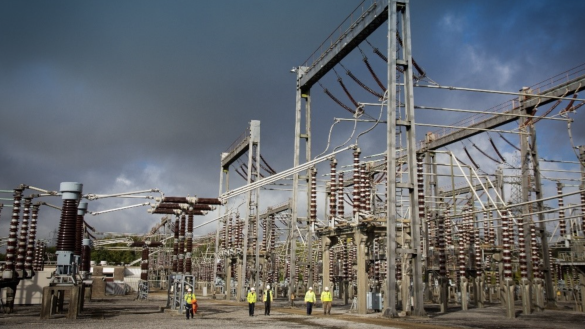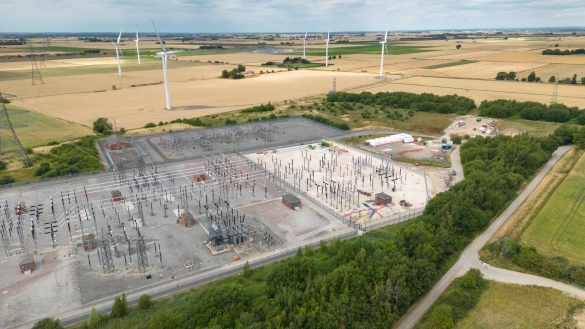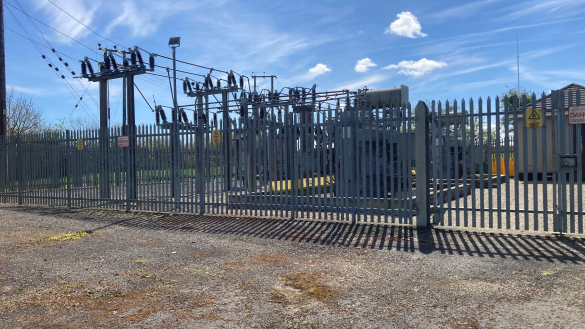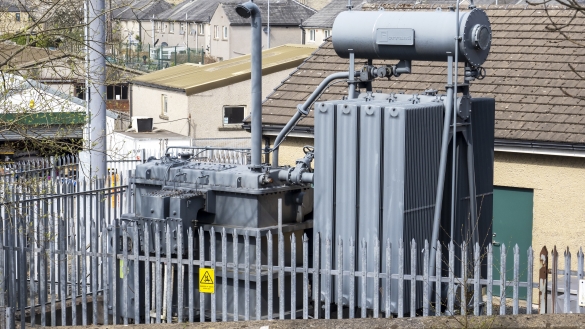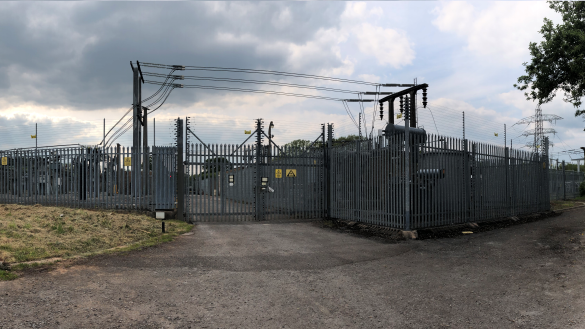Transmission and distribution substations
Substations are where electricity lines are connected and switched and where the voltage is changed by transformers. They range from the very large to the very small - see below for a guide. But in nearly all cases, the highest field is usually produced by the lines and cables supplying the substation and not by the equipment inside the substation itself. If the substation itself produces a field outside its perimeter, it usually falls away over the first few metres.
Transmission substations are the largest substations in the UK where 275 kV and 400 kV overhead lines or underground cables are switched in and out of operation, and where electricity is transformed to 132 kV for distribution to surrounding areas. They can be a hundred metres or more across (the size of several football pitches) and are surrounded by a metal fence. Transmission substations usually contain several buildings but there are a few examples where all the equipment is contained inside one large building.
Although these substations operate at the highest voltages found on the UK power network, the fields from the equipment inside the substations usually do not extend more than a few metres, if at all, beyond the perimeter fence. There is usually a large gap between any equipment and the external boundary fence. Outside of a substation the major source of electric and magnetic fields will be the overhead lines and underground cables that connect the substation to the electricity network.
Electric fields
Substations are secure installations with large fences to prevent access. The security fence also happens to prevent electric fields from emerging outside the boundary of the substation because electric fields cannot pass through the fence.
Magnetic fields
Substations contain cabling and equipment that can produce large magnetic fields very close to the equipment. These fields reduce very rapidly and by the time they reach the boundary fence of the substation are usually at a low level. As with electric fields, the largest magnetic fields around the perimeter of a substation almost always come from the overhead lines and underground cables entering it. There are often several overhead lines that enter a substation, and it can be difficult to distinguish the fields from the substation itself, from the fields produced by these lines.
If electrical equipment is located close to the perimeter fence, it can cause an elevated magnetic field outside the fence. However, generally, away from any overhead lines or cables entering the substation, the magnetic field at the perimeter fence would be around 1 microtesla, which is significantly below the public exposure guideline level of 360 microtesla.
Distribution substations come in a range of sizes. Some can look similar to transmission substations except that the overhead lines and equipment are typically smaller, and the overall size of the site is smaller. Others may not have overhead lines and the electrical equipment may not be visible from outside.
These substations transform electricity between 132 kV, 33 kV and 11 kV. They are smaller than a transmission substation but bigger than the final distribution substations that transform the electricity to the 230 V that supplies our homes.
They produce fields in a similar way to a transmission substation, only typically at a lower level reflecting the lower voltage and smaller equipment on site, and lower voltage ratings. That means that the magnetic fields from the equipment inside the substation rarely extend outside the substation boundary, and the security fence will prevent electric fields from exiting the site. The highest fields usually come from the overhead lines or underground cables entering or leaving the substation.
These substations are always compliant with the public exposure guidelines no matter how close to the substation you are.
